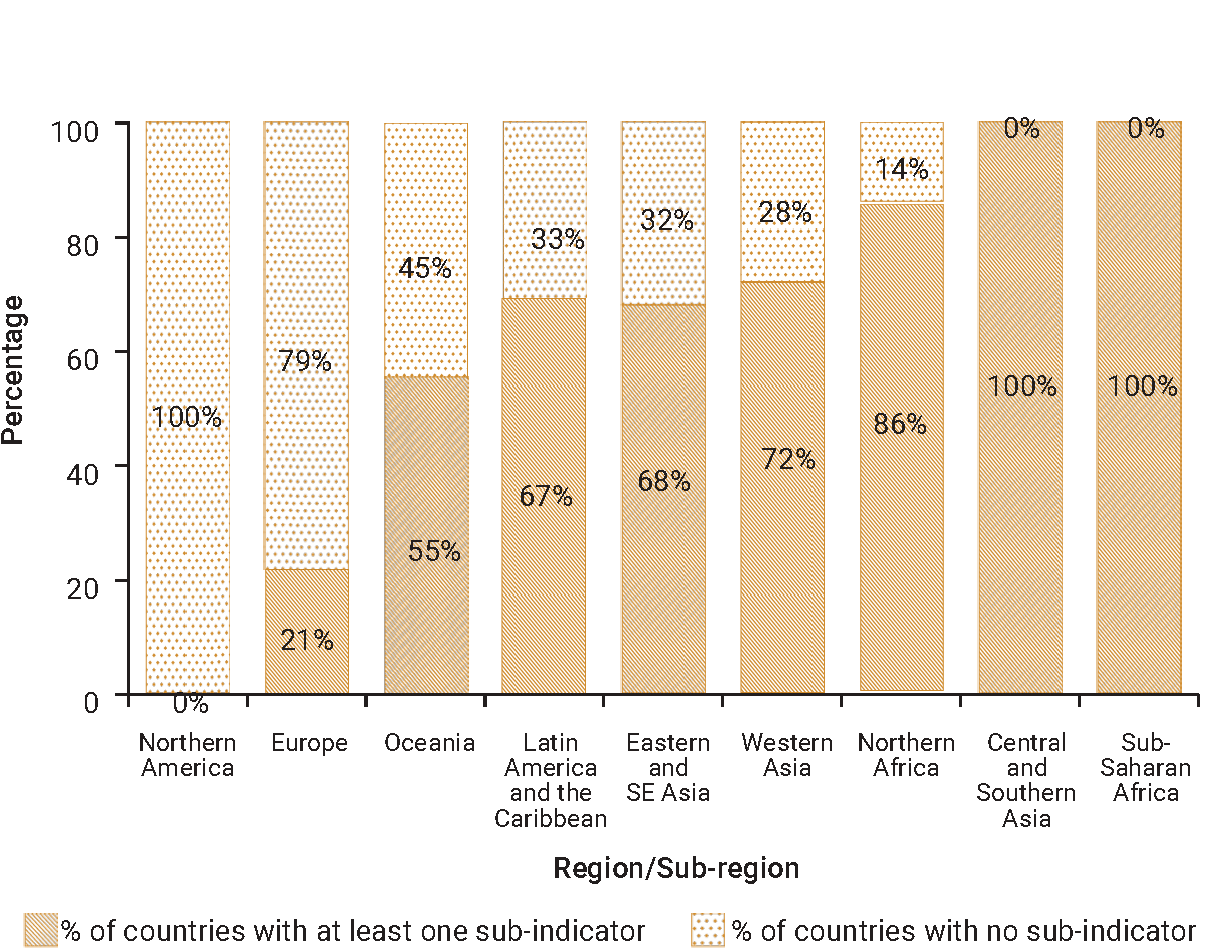SDG Indicator 6.a.1: Amount of water- and sanitation-related official development assistance that is part of a government-coordinated spending plan
1. Key features and metadata
Definition: This indicator monitors the proportion of total water and sanitation-related Official Development Assistance (ODA) disbursements included in developing country governments’ budgets.
| Sub-indicator | Disaggregated by |
|---|---|
|
DC_TOF_WASHL Total official development assistance (gross disbursements) for water supply and sanitation, by recipient countries (millions of constant 2021 USD) |
Provider/Recipient country Water sector Type of finance Type of resources provided |
Sources of information: OECD Development Assistance Committee (DAC) statistics.
Related SDG Indicators: 6.1.1 (Proportion of population using safely managed drinking water services), 6.2.1 (Proportion of population using (a) safely managed sanitation services and (b) a hand-washing facility with soap and water), 6.3.1 (Proportion of domestic and industrial wastewater flows safely treated), and 6.5.1 (Degree of integrated water resources management).
2. Data availability by region, SDG Global Database, as of 02 July 2025

3. Proposed disaggregation, links to policymaking and its impact
| Proposed disaggregation | Link to policymaking | Impact |
|---|---|---|
|
Amount of ODA disbursements for water and sanitation, by recipient country and by sector (millions of constant 2021 USD)(Organisation for Economic Co-operation and Development [OECD] n.d.):
|
This disaggregation provides relevant information on the primary purpose of the allocated funds and their potential impacts on the provision of water and sanitation services. It highlights which water sectors are being funded. It shows where gaps remain and where opportunities for new funding and partnerships for developing countries exist. Thus, it contributes to enhancing the monitoring of development finance to support water management and its outcomes with a view to adapting ODA flows to population needs and national priorities (OECD 2022). This disaggregation is in line with the UN General Assembly Resolution, recognizing access to safe drinking water and sanitation as a distinct human right (UNGA 2016a). It alsocontributes to the UN Water Action Decade (UNGA 2017b) and the SDG 6 Global Acceleration Framework (UN-Water 2020). |
Access to water and sanitation is critical for a healthy environment and social and economic development (UN-Water n.d.a). Vulnerable and marginalized groups are disproportionately affected by insufficient delivery and the not-so-optimal quality of water, sanitation and hygiene (WASH) services and sometimes face discrimination as a result (UN 2022a). The current level of funding is insufficient to reach SDG 6 targets by 2030, leaving 2 billion people lacking managed drinking water and 3.6 billion people lacking safely managed sanitation. US$114 billion of investment per year is needed to achieve this target (UNESCO and UN-Water 2020). In this context, development cooperation needs to be strengthened and to focus on pro-poor water strategies and projects aligned with national plans, while climate finance could be used more extensively to support water-climate synergies. |
|
Annual expenditure for drinking water, sanitation and hygiene, by country and source of finance (millions of constant 2021 USD)(WHO 2022a).
|
This disaggregation emphasizes the total amount of funding by different financial sources in the WASH sector (UN-Water n.d.b). It can be used by decision-makers to identify untapped resources, leverage existing financing resources (e.g. with the private sector) or create new sources of funding (e.g. blended finance, public-private partnerships or mobilizing climate finance). The contribution of the private sector in water infrastructure remains limited in low- and middle-income countries as is commercial finance mobilized by development cooperation for WASH, and public finance does not create sufficient synergies to raise additional capital. This disaggregation is in line with the UN General Assembly Resolution, recognizing access to safe drinking water and sanitation as a distinct human right (UNGA 2016a). It alsocontributes to the UN Water Action Decade (UNGA 2017b) and the SDG 6 Global Acceleration Framework (UN-Water 2020). |
Investments in other sectors do not sufficiently consider their potential impacts on water and aquatic ecosystems, potentially resulting in increasing pressures on and risks for water resources. More efforts, therefore, should be made to attract additional funding for water from traditional sources of funds (e.g. ODA, government or water users) but also from private investors by reducing the risk associated with water investments and the cost of capital while deploying appropriate financing. For example, using financial guarantees or economic instruments like cost-recovery tariffication to create incentives for private sector engagement (OECD 2022). |

